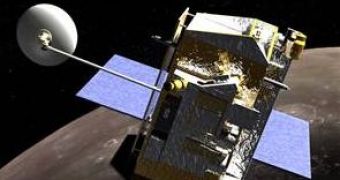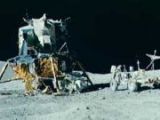In January 2004 President Bush announced that NASA will restart the human exploration missions on the Moon. This should happen as early as 2015 and no later than 2020. In preparation, NASA will send a probe called the Lunar Reconnaissance Orbiter. LRO should be orbiting the Moon no later than 2008.
The probe is to look for the best locations of future robotic and human lunar landing sites, to identify potential lunar resources, and to investigate the lunar radiation environment in terms of impact on humans.
The difficulties
LRO is intended to fly for more than a year at very low altitudes to inspect the territory properly. Jim Watzin, planetary division chief for Goddard's Flight Programs and Projects Directorate, explained the challenge: "Low lunar orbit, at the precision mapping altitude of 50 kilometers, is substantially different from our experiences at other planets." Watzin said that low lunar orbit is inherently unstable, due to the asymmetry of the lunar gravitational field. Thus, the probe will have to be stirred through active propulsive means.
Moreover, as the probe will go in and out of the shadow, it will experience dramatic temperature shifts.
Revisiting past landing sites
The probe will image both U.S. and Soviet past landing sites on the Moon. This will of course include the Apollo sites, and scientists hope that these images are going put to rest the speculations that NASA's human expeditions to the Moon have been a hoax.
Mark Robinson of Northwestern University's Center for Planetary Sciences, the principal scientist designing the Lunar Reconnaissance Orbiter Camera (LROC), declared: "We will image the Apollo sites, and you will see the descent stages sitting on the surface. LROC will clearly see the overall shape of that landing hardware, but won't be able to resolve such things as the insignia on the side of the descent stage, or see the stripes on astronaut-planted flags."
Other sites will include NASA's Ranger and Surveyor lunar probes, as well as the Soviet Union's Lunakhod automated rovers.
The polar caps
One of the most interesting tasks of the LRO is to explore the Moon's polar regions, and to check whether there are any ice caps. This would be vital for a future permanent or at least long-termed Moon station. Bringing tons of water and oxygen from Earth is virtually impossible, and thus it is hoped that Moon already has water.
Between 1998 and 1999 NASA's Lunar Prospector circled the moon charting levels of hydrogen in shadowed craters near the moon's south and north poles. The high levels of hydrogen might be an indication that billions of tons of water ice lie below a modest covering of soil.
Instruments
Besides an optic camera, the probe will have a radiometer which will chart the temperature of the entire Moon surface. This could identify the ice deposits even if they are not exactly at the very surface.
One of the most important and interesting instruments will be the so-called Lyman-Alpha Mapping Project, or LAMP. This is an instrument capable of detecting far (i.e. high energy) ultraviolet light. "We call it seeing in the dark," said Alan Stern, a planetary scientist at the Southwest Research Institute, and principal investigator of the LAMP. "Nothing like this has ever been done. We're using a clever trick of nature. That is, permanently shadowed regions are dark to sunlight and Earthshine. But in the ultraviolet, the sky is showering photons down from the interplanetary hydrogen glow. So to LAMP? it's not dark at all."
The Moon, although is the closest cosmic body, still has many unlocked mysteries and there are still huge amounts of interesting data to be collected. The fact that it lacks an atmosphere is also an advantage because this preserves everything intact for billion of years.
Image credits: NASA

 14 DAY TRIAL //
14 DAY TRIAL // 
